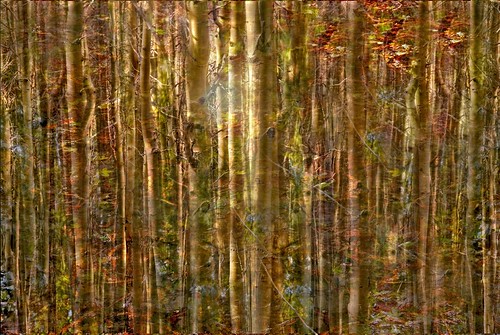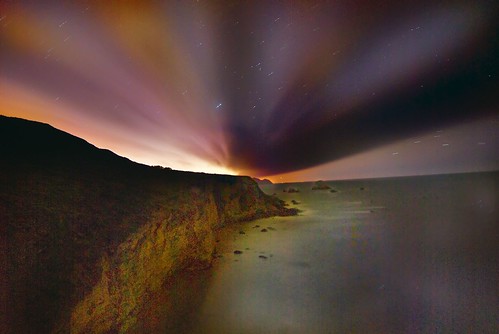If you grant my premise that digital photography is an entirely new medium of expression, then you have to wonder about the prevalence of metaphors that use the techniques of analog photography. In Photoshop, we use the Dodge and Burn tools. We “cross process” using Nik’s excellent library of Photoshop filters (among other digital “cross processing” techniques). We produce versions of our images from our RAW captures that are “like the prints made from film negatives.” The myths and metaphors imported from film are useful shared vocabulary, but none of these analog-to-digital metaphors are really quite right.
View this image larger. Read the back story featuring this image.
A metaphor is an implicit comparison of one thing to something else: “my love is a red, red rose”. A simile, of course, is a kind of metaphor that makes the comparison explicit using “like” or “as”: “my love is as beautiful as a red, red rose.”
Confusion occurs when metaphors (or similes) are confused with facts. In no way are the metaphors of analog photography exactly analagous to the digital concepts and techniques described.
The Photoshop Dodge and Burn tools operate on pixels, not on emulsion-coated paper, and are not even the best way to achieve the results of lightening or darkening areas of an image. (You are much better off using selective layer masking, the Paintbrush tool, and blending modes to achieve this result.)
In analog terms, “cross processing” meant dunking film or paper in chemistry that was not intended. Nik carries this metaphor quite a distance. Its cross-process filters let you choose either C41 to E6, or E6 to C41 (using the names for Kodacolor and Ektachrome processing). You can also fine tune these filters in a variety of ways. But obviously you are not cross processing. At best, you have simulated cross processing with these Photoshop filters.
It’s true that I create many versions of my photos starting with a single RAW capture. For example, I might produce an RGB version for screen display, a CMYK version for publication, a sized CMYK version for running through my RIP software and making a physical print, a JPEG version for web display, and a light JPEG version that looks good on Flickr (Flickr runs a filter that makes some images look artificially darker), and so on. But these pixel-to-pixel conversions don’t really compare to the process of analog print making except in the sense that you are changing one thing (the negative or RAW capture) into another (the print or the converted file). Print making still requires output on paper.
So what’s to make of all this? Metaphors are good because they help communicate tough concepts. But they can also shackle us to think in a manner that doesn’t apply to new technologies and situations. Is there a good reason that new-fangled digital SLRs look pretty much like old-fashioned analog SLRs, or is this form-factor just what we are used to, and an example of metaphor gone awry? What will the digital generation that comes of age without understanding the analog terminology do with these dubious metaphors, and where will they go?
View this image larger. Read the back story featuring this image.
Myths can be something that is widely believed, but false. A myth can also be an important legend about how something was created. When myth is used in the second sense, the myth can even be true (at least in part). Myths are stories, and they are also metaphors.
The myths of analog photography include the patience required to coat fragile glass plates with emulsion, and to make exposures of long duration under field conditions. Ansel Adams is said to have carted his view camera up and down the Sierras on the back of a mule. These are stories of a forgotten world, and it’s hard to even remember the endurance it required to be a serious photographer.
When the last master silver halide print has been made, what myths will digital photographers have to compare with the heroic traditions of analog photography? Will the new mythology be about photography, or about processing pixels?
By learning to see the world digitally, by making long night exposures from a cliff high above the ocean, by experimenting with different ways to achieve digital capture and to process the captures, I like to think I am contributing to the new mythology of digital.

